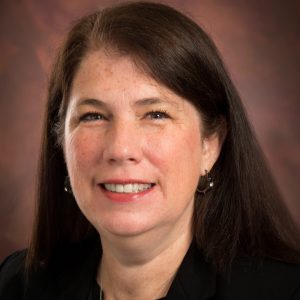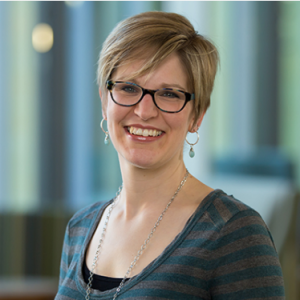
BUILDING NURSING SCIENCE THROUGH PARTNERSHIPS
April 2021
The Engagement Committee Marketing Workgroup had the opportunity recently to talk with Drs. Nancy Albert, Mary Heitschmidt, and Élise Arsenault Knudsen about the history and future of the Research thru Academic-Clinical Partnerships Research & Implementation Interest Group. The Marketing Workgroup has worked on initiatives to highlight the critical role of DNP-prepared nurses in the research trajectory and explore opportunities to market MNRS to nurses in clinical practice. We wanted to learn more about Research thru Academic-Clinical Partnerships RIG and the work they have done to foster clinical – academic research collaborations that are important for translation and implementation of research.
Dr. Nancy Albert, PhD, CCRN, CCNS, NE-BC, FAHA, FCCM, FHFSA, FAAN is the Associate Chief Nursing Officer of the Office of Research and Innovation at the Cleveland Clinic. She was one of the inaugural members and leader of the Research thru Academic-Clinical Partnerships RIG. Dr. Mary Heitschmidt, PhD, APRN, CCRN-K is the Director of Clinical Research at Rush University System for Health and currently co-chairs with Dr. Élise Arsenault Knudsen, PhD, RN, ACNS-BC, who is the Clinical Nurse Specialist for Research and Practice at University of Wisconsin Health Hospitals and Clinics.
The Research thru Academic-Clinical Partnerships Research & Implementation Interest Group was created during an annual MNRS conference, around the time there was a condensing of RIGs to be effective and efficient. Almost 40 members joined the meeting and discussed what they wanted from the RIG. They identified three common reasons – to collaborate, communicate, and learn from each other. The RIG now has close to 60 members that include nurse researchers with a clinical affiliation (50%), academic affiliation or dual affiliation (50%), as well as deans and DNP program directors. The RIG leaders have used different strategies to stay engaged between the annual conferences. This past year, members provided presentations of their own research as a way to learn about one another and remain engaged in the RIG.
Members’ passion for collaboration is at the heart of the RIG and drives the RIGs’ success. The group has collaborated on multiple projects, including a review of literature, Fostering Academic-Clinical Research Partnerships, and a cross‐sectional study of United States Academic‐clinical research collaborations: Characteristics, resources, benefits and outcomes. The projects emerged from discussions with former RIG chairs, Dr. Sharon Tucker and Linda Hand who suggested surveying members about the level of academic-clinical partnerships. The team, led by Dr. Albert, first wanted to learn what was in the literature. Despite a vast body of literature about academic-clinical partnerships, less than 10% focused on partnerships for research.
The review article provided guidance for the research project and developing the survey questions. The survey was disseminated to hospital-based nurse scientists and through MNRS to academic nurse scientists. 120 nurses responded on behalf of their organizations. A surprising finding was that only seven participants had joint appointments; the team had anticipated to see more formalized collaborations through joint appointments for nurse researchers. They also learned that there was no difference in publications and presentations between nurses who were in academia versus nurses in a clinical setting. They propose that opportunities exist for hospitals with fewer resources to employ nurse researchers who can then collaborate with schools of nursing. Dr. Albert said that there is more work to learn why clinical sites had the same outcomes as academic sites and how to better match clinical and academic organizations to increase and strengthen collaborations and partnerships. Under Dr. Albert’s leadership, RIG members are currently collaborating on a COVID-19 research project. The ongoing multi-organizational partnerships exemplifies the spirit of the Research thru Academic-Clinical Partnerships RIG.
We asked the RIG leaders to share their thoughts on how to increase collaboration in MNRS and to grow our membership among clinical nurse researchers. They encouraged MNRS to talk with clinically based nurses and nurse researchers to find out their needs and ensure they feel there is value where they can learn and grow. Dr Heitschmidt also suggested that MNRS consider collaborating with clinical nursing organizations to increase the visibility of the organization among clinical nurses.
View Their Response Videos Here:



Nancy Albert, PhD, CCRN, CCNS, NE-BC, FAHA, FCCM, FHFSA, FAAN
WATCH VIDEO HERE >
Mary Heitschmidt, PhD, APRN, CCRN-K
Élise Arsenault Knudsen, PhD, RN, ACNS-BC
In the video above, Elise shares why she was drawn to the Research thru Academic-Clinical Partnerships RIG. We have many RIGs that cross the lifespan and in diverse settings with many opportunities for collaboration. A couple of questions suggested by Drs. Albert and Heitschmidt for RIG members to consider are what are the commonalities that would foster collaboration? How can resources be shared? How can MNRS facilitate ongoing communication between RIGs during the year? Learning from co-chairs what other RIGs are doing would help increase engagement during the year and spark opportunities for engagement.
Also above, Mary shares her servant leader approach and how focusing on the snowball can actually build a mountain. The Research thru Academic-Clinical Partnerships RIG exemplifies the heart of nursing science in their collaborative approach to building bridges that sustain multi-organization research to increase generalizability of outcomes that can be translated into clinical practice.
